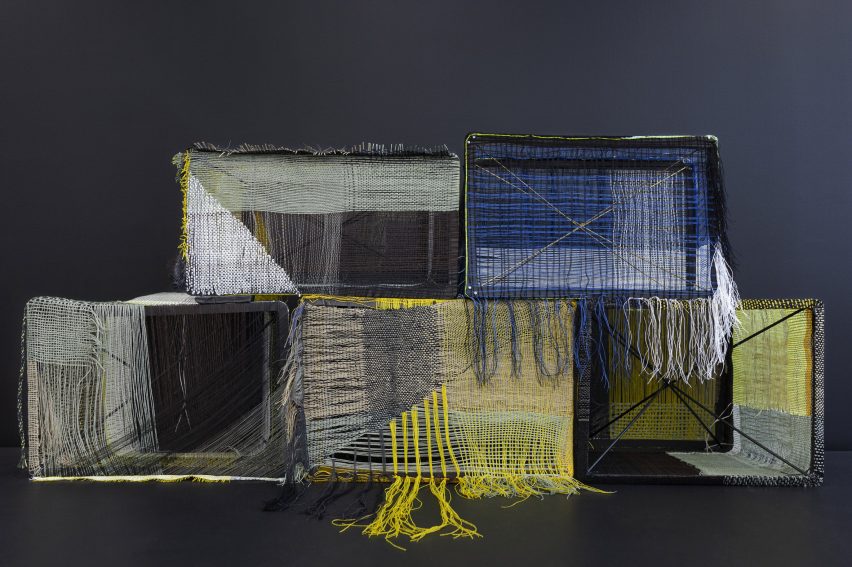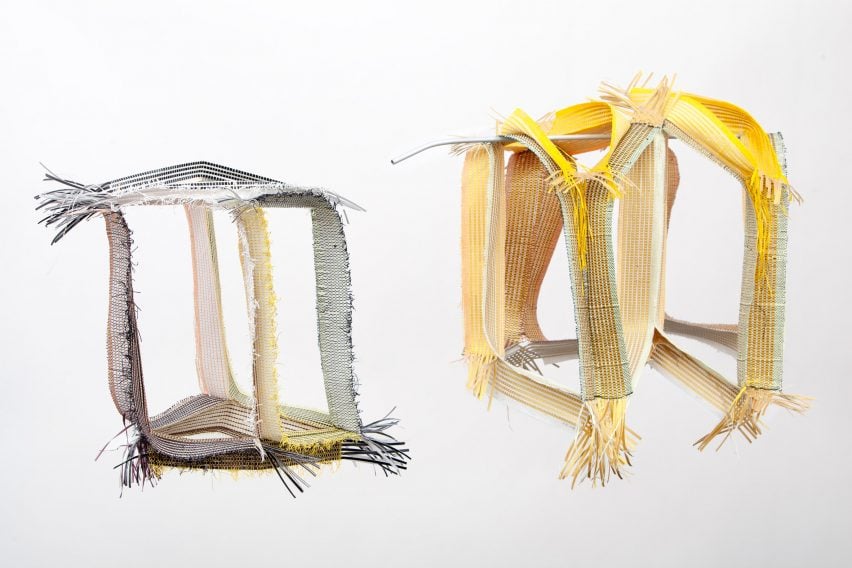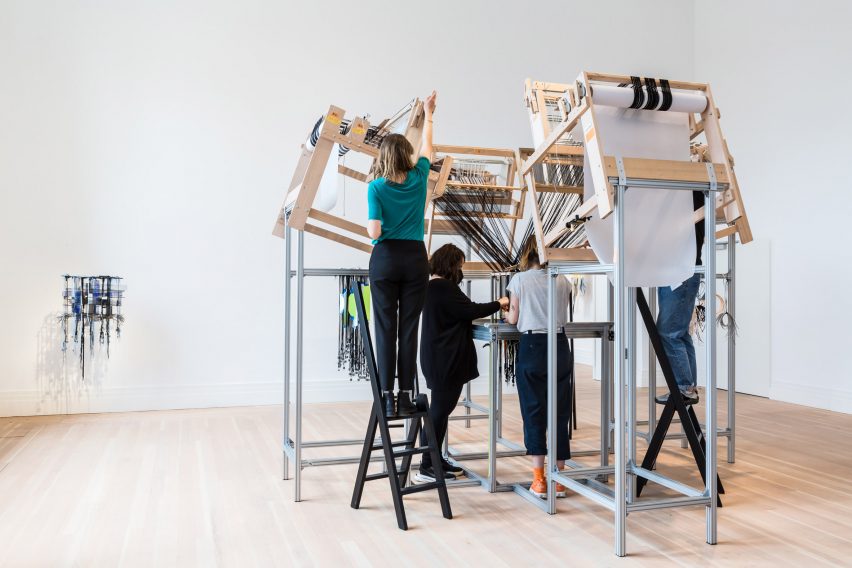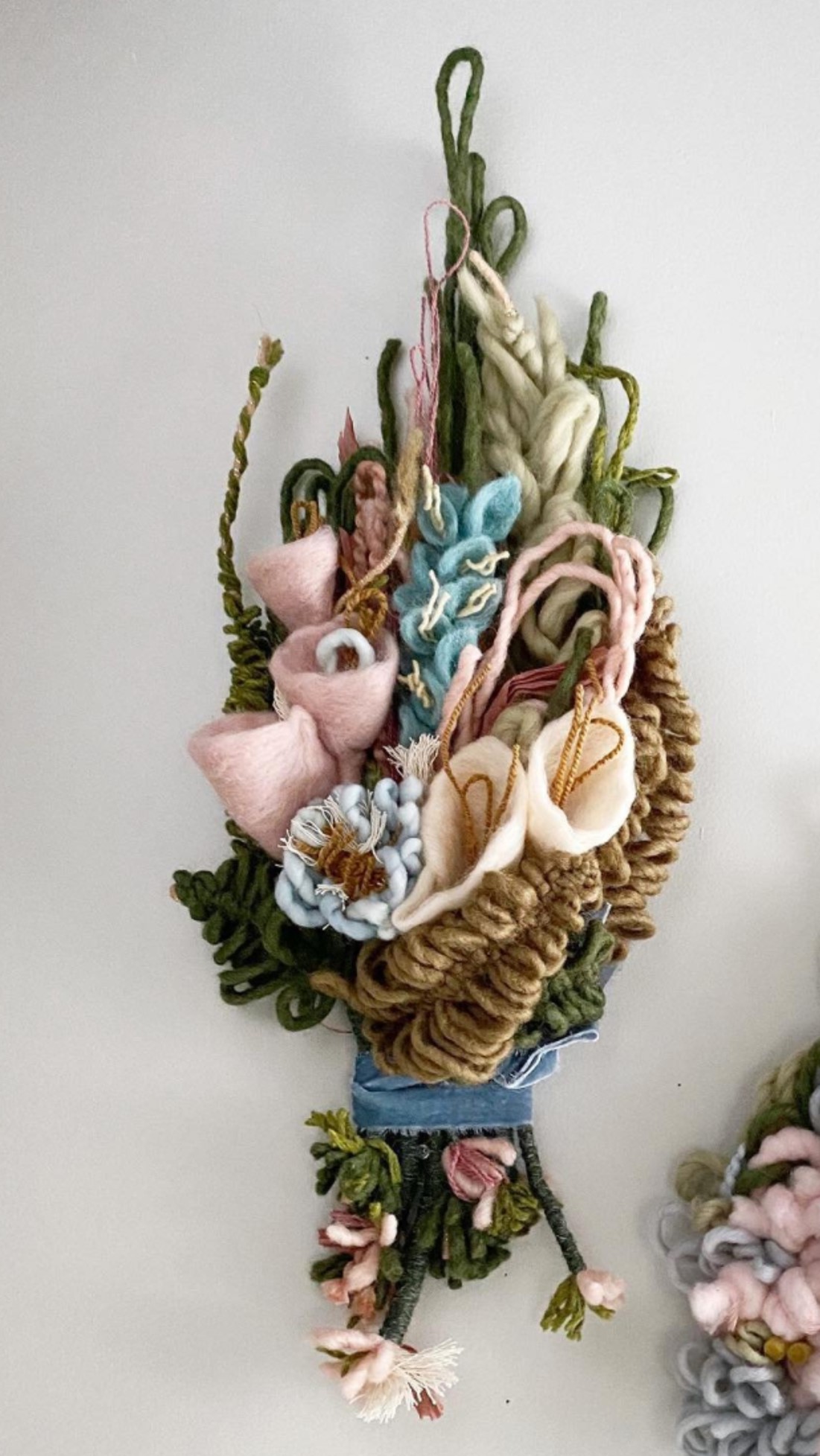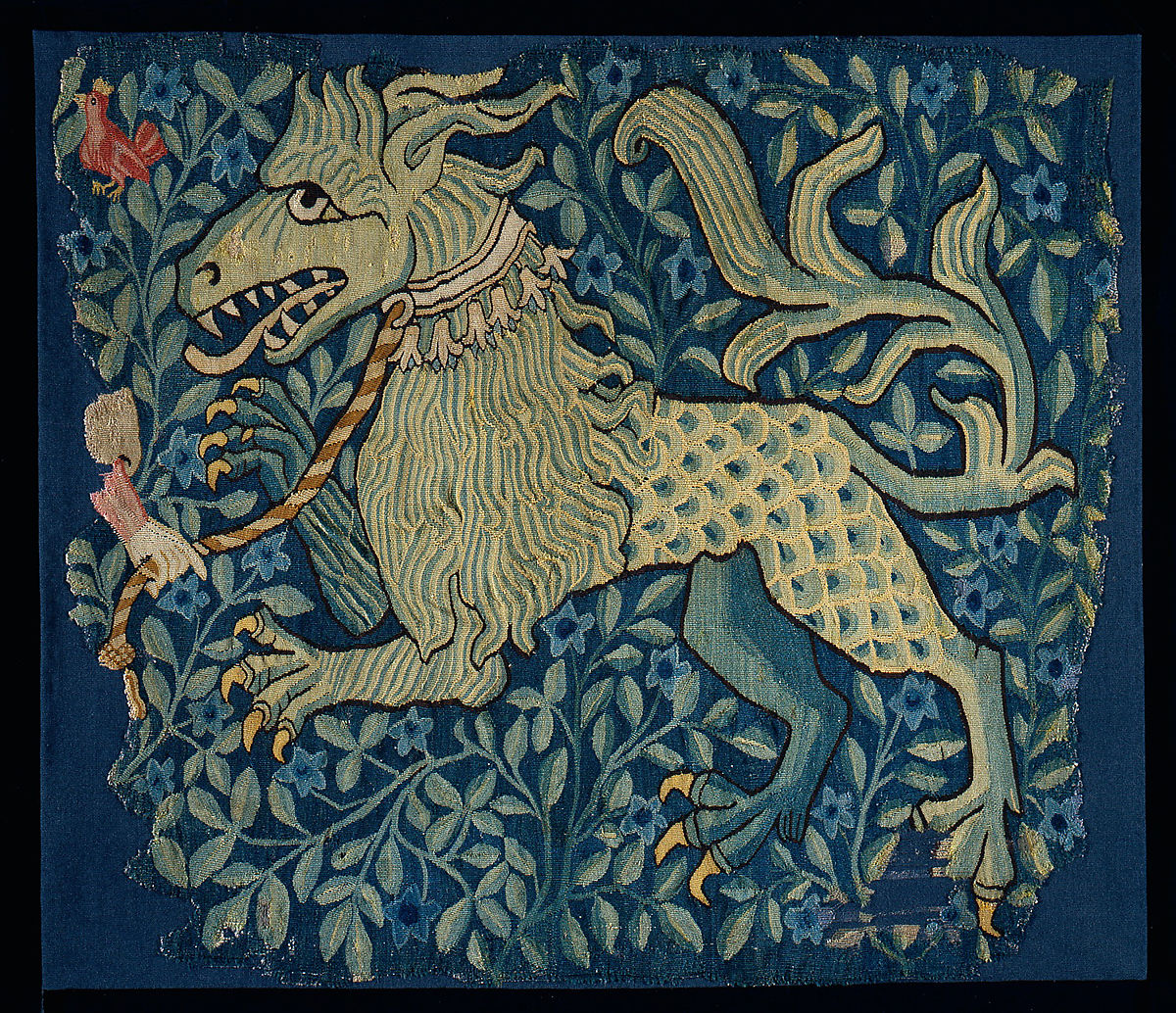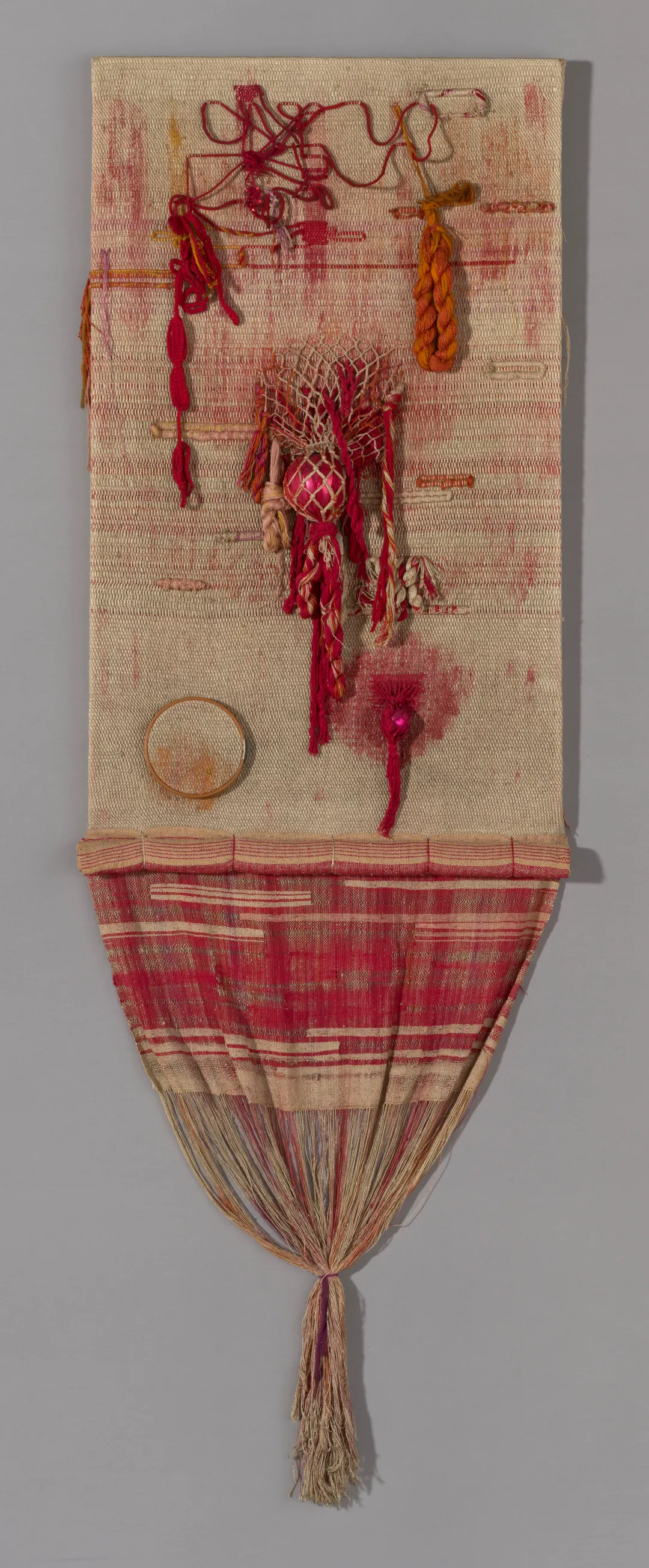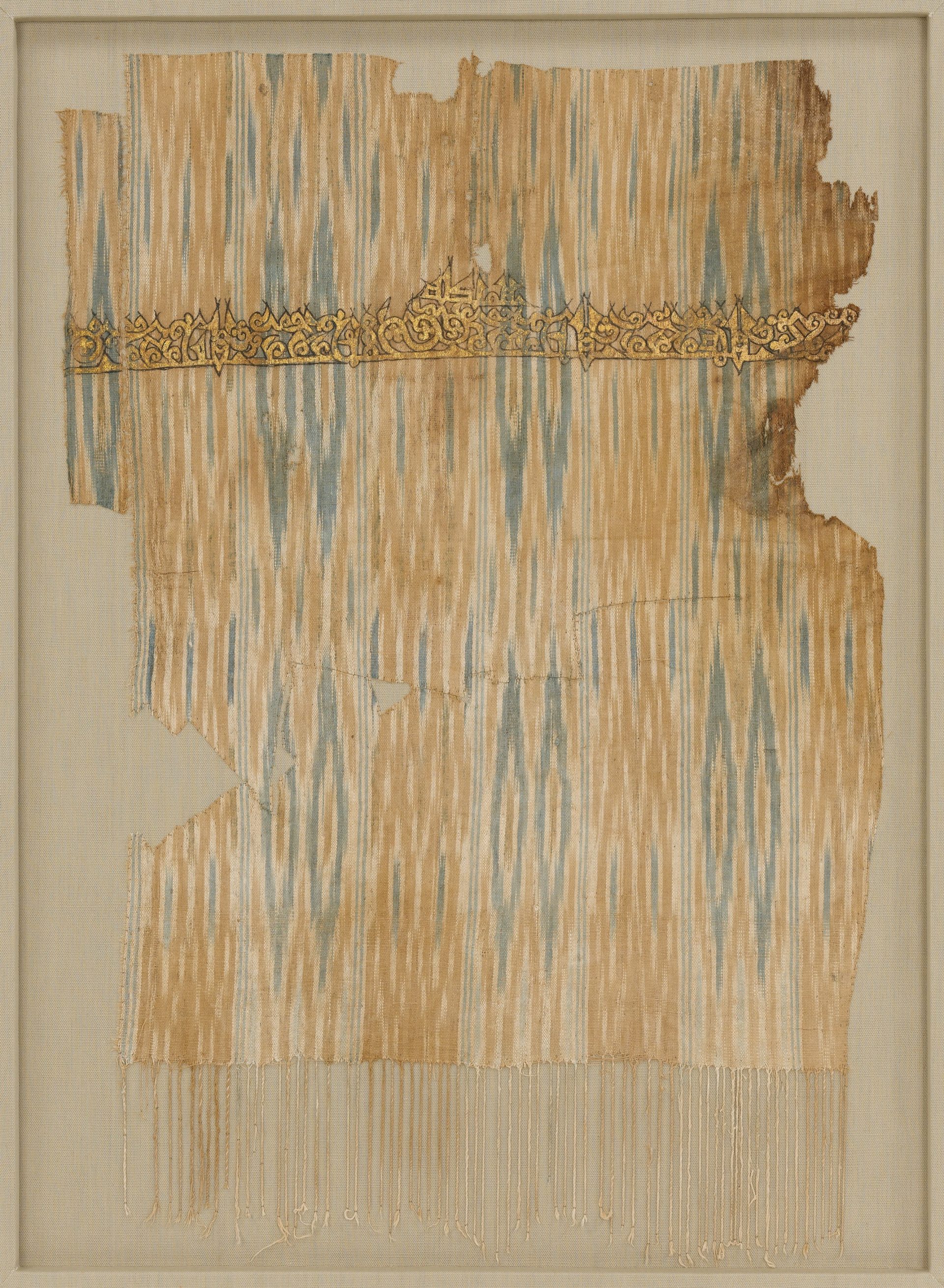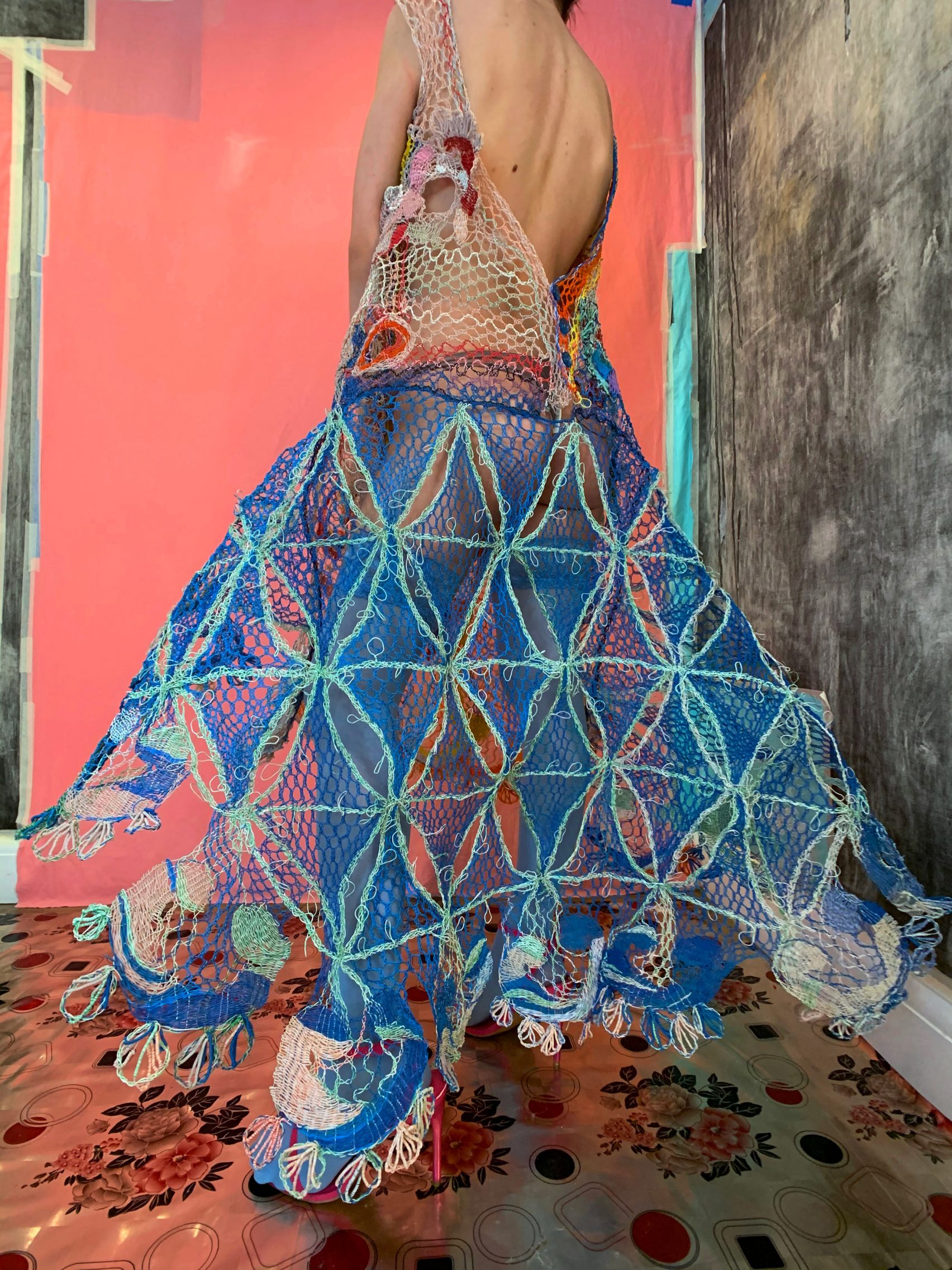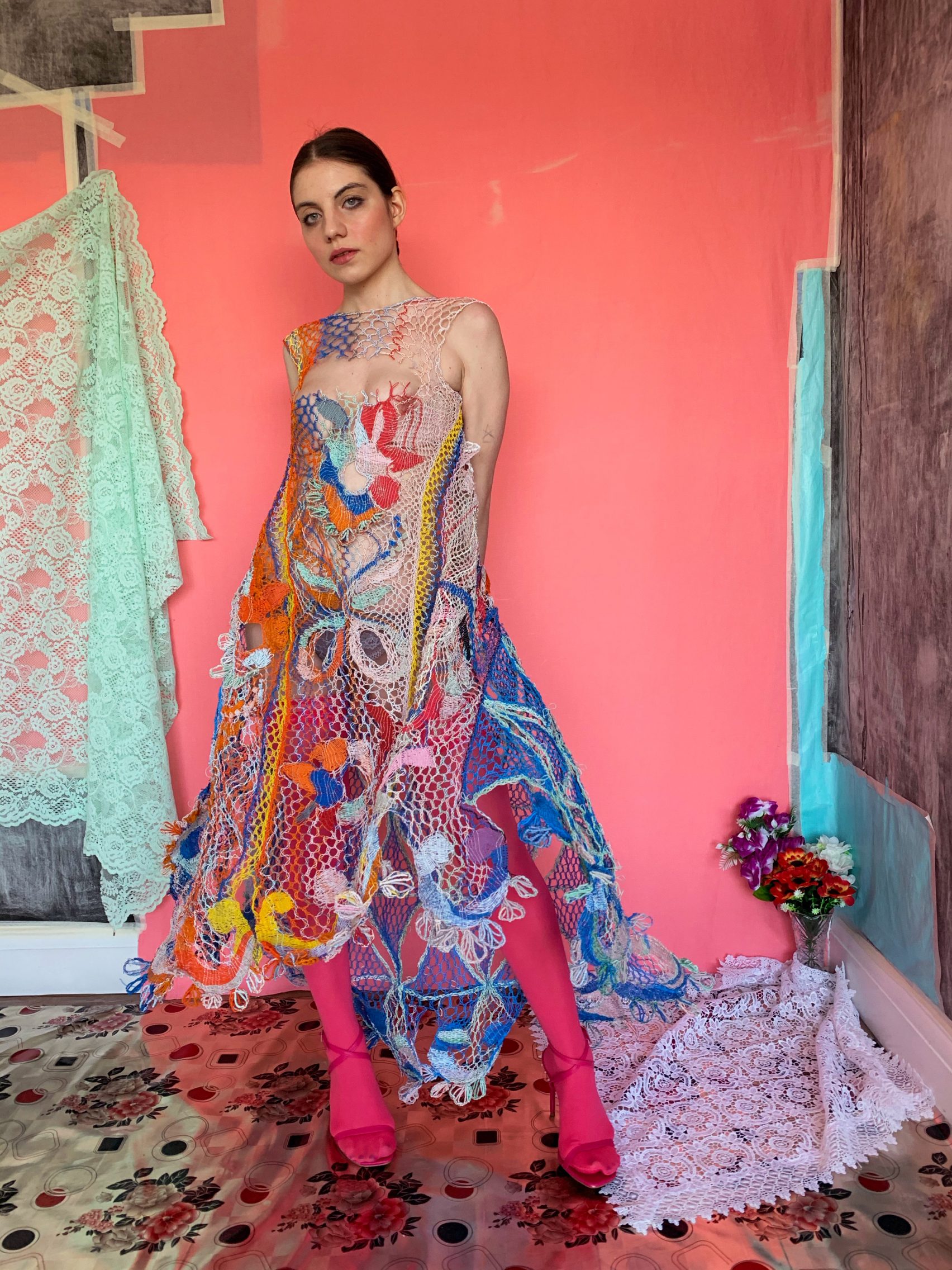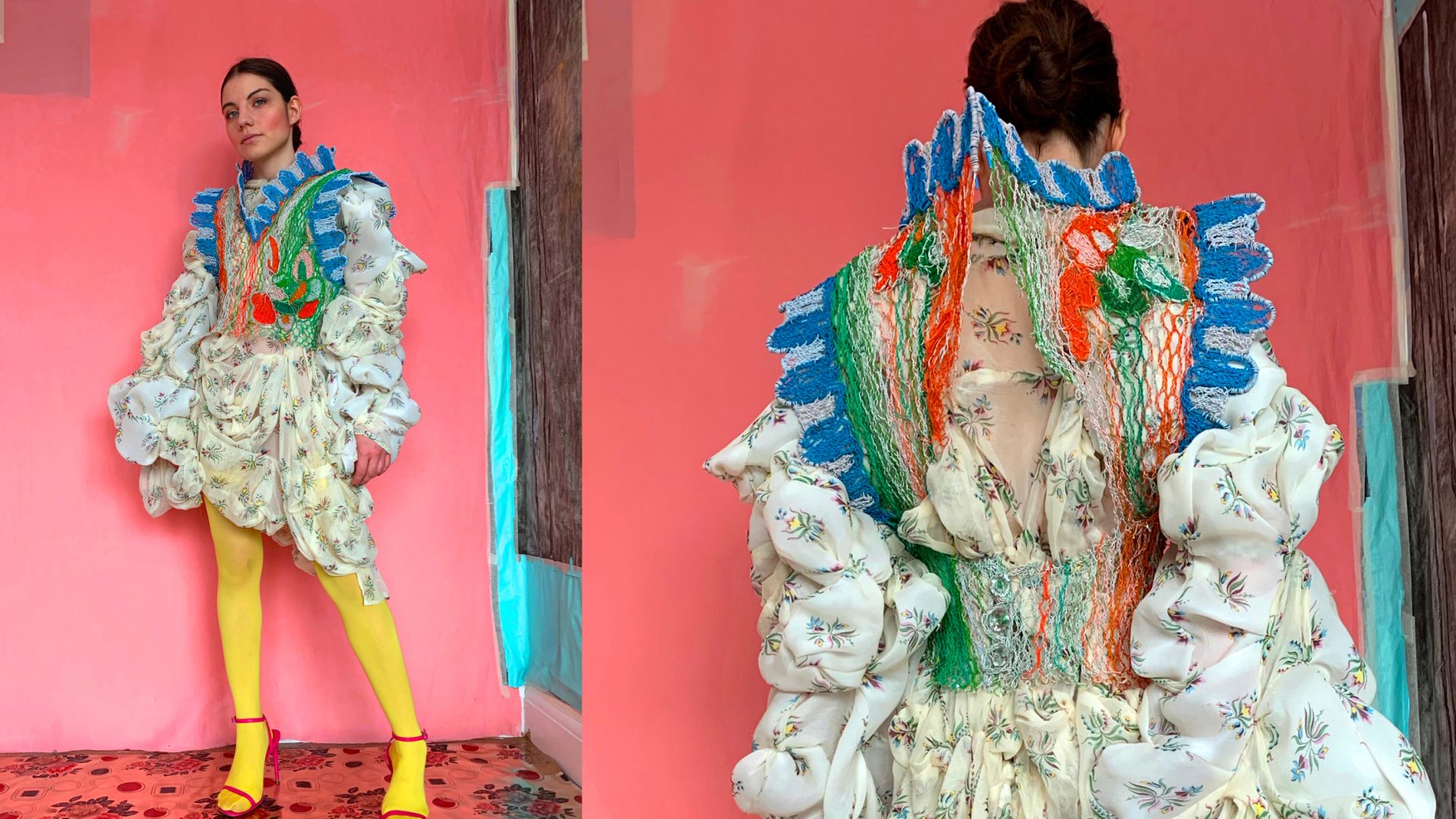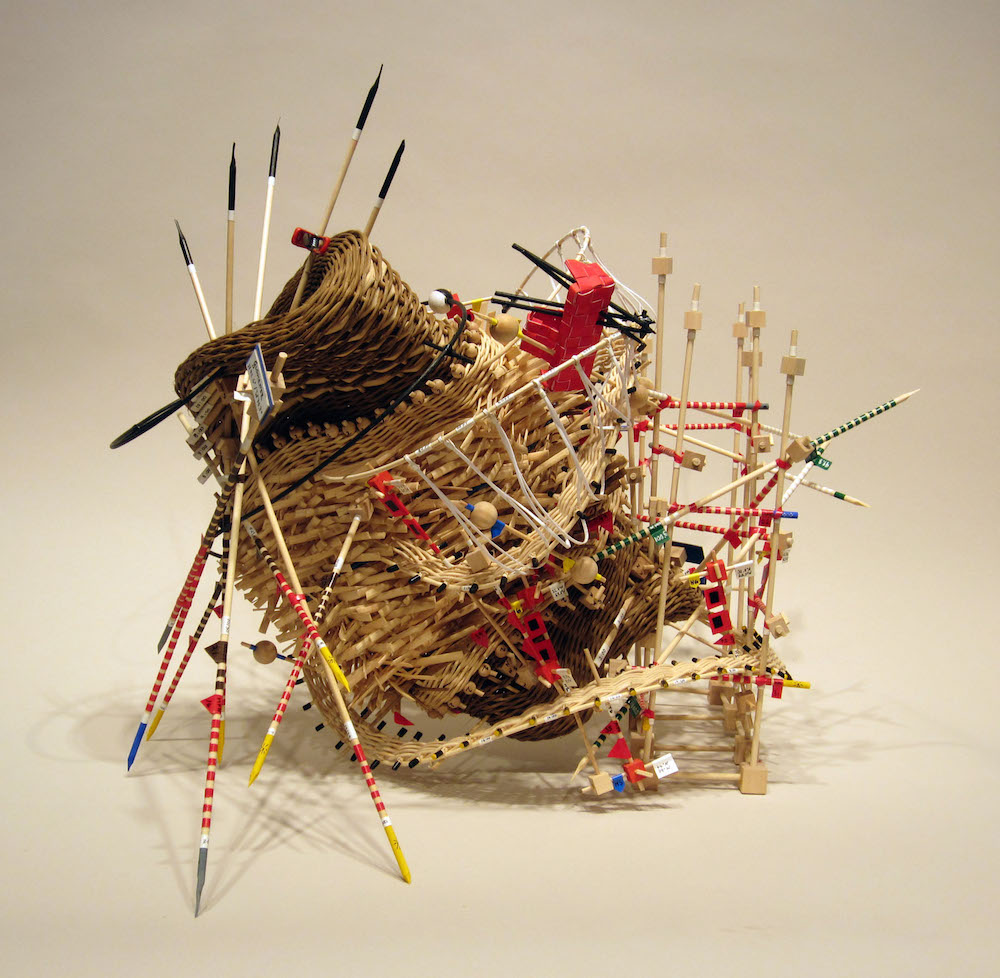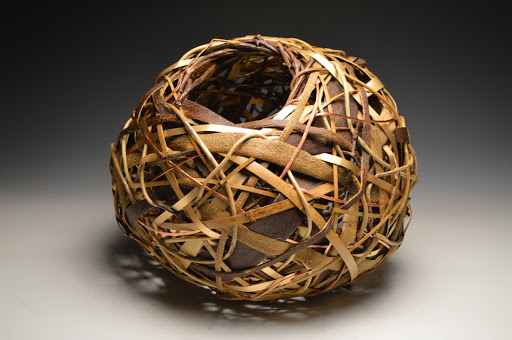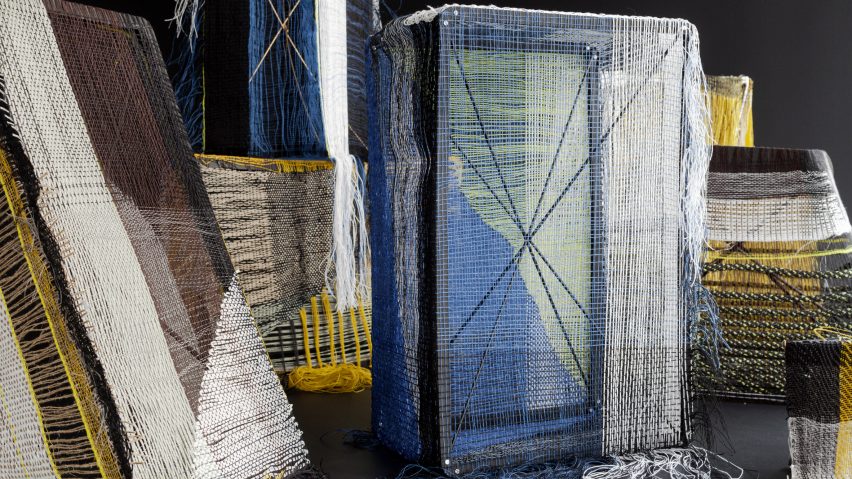
The Woven Cosmos exhibition presented work by the artist and industrial designer Hella Jongerius earlier this year in Berlin, Germany. Jongerius’ work examines the possibilities in which the textile industry can become more sustainable and thus poses the idea of using weaving to create 3D structures that can be used in architecture and even in sustainable energy technology. Using a multiaxial loom, she has woven several prototypes, such as bricks, foldable cubes, and solar fibers that can unfurl when the sun shines. The kinds of materials used are not listed. However, the focus of these works shown is more on the possibilities this new way of weaving brings and on the exploration of how the weaving itself can provide enough strength and rigidity without the need of additional structural support. Although 3D weaving is still a newly developing practice, these woven structures show a lot of promise and hope that the ancient art of weaving can still be transformed and adapted to address our current, ever-changing society.
